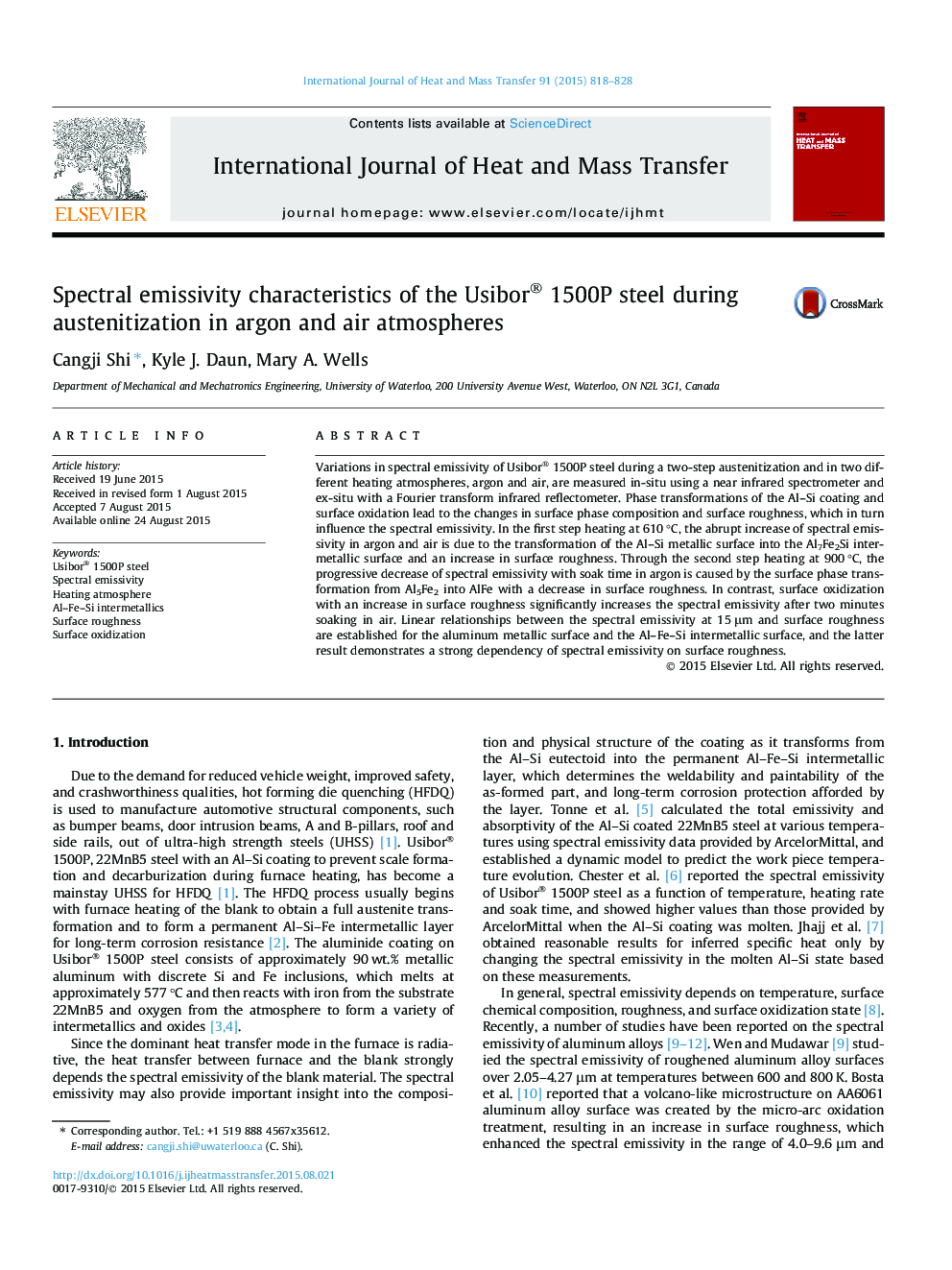| Article ID | Journal | Published Year | Pages | File Type |
|---|---|---|---|---|
| 7056417 | International Journal of Heat and Mass Transfer | 2015 | 11 Pages |
Abstract
Variations in spectral emissivity of Usibor® 1500P steel during a two-step austenitization and in two different heating atmospheres, argon and air, are measured in-situ using a near infrared spectrometer and ex-situ with a Fourier transform infrared reflectometer. Phase transformations of the Al-Si coating and surface oxidation lead to the changes in surface phase composition and surface roughness, which in turn influence the spectral emissivity. In the first step heating at 610 °C, the abrupt increase of spectral emissivity in argon and air is due to the transformation of the Al-Si metallic surface into the Al7Fe2Si intermetallic surface and an increase in surface roughness. Through the second step heating at 900 °C, the progressive decrease of spectral emissivity with soak time in argon is caused by the surface phase transformation from Al5Fe2 into AlFe with a decrease in surface roughness. In contrast, surface oxidization with an increase in surface roughness significantly increases the spectral emissivity after two minutes soaking in air. Linear relationships between the spectral emissivity at 15 μm and surface roughness are established for the aluminum metallic surface and the Al-Fe-Si intermetallic surface, and the latter result demonstrates a strong dependency of spectral emissivity on surface roughness.
Related Topics
Physical Sciences and Engineering
Chemical Engineering
Fluid Flow and Transfer Processes
Authors
Cangji Shi, Kyle J. Daun, Mary A. Wells,
